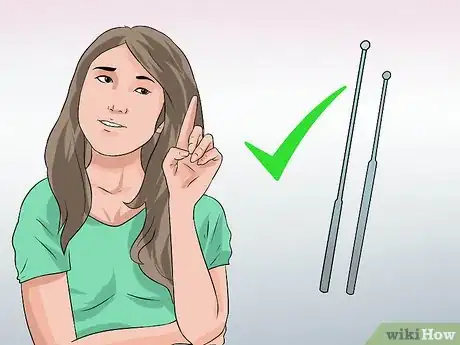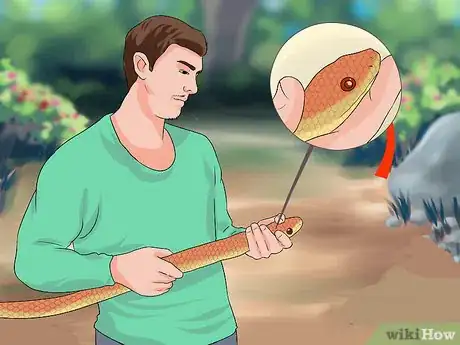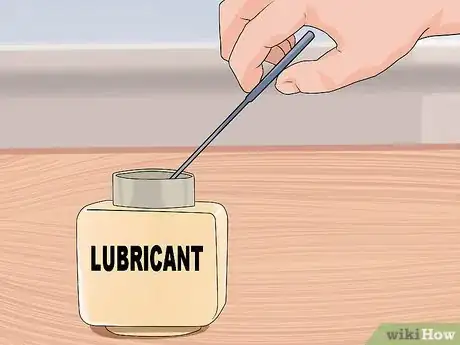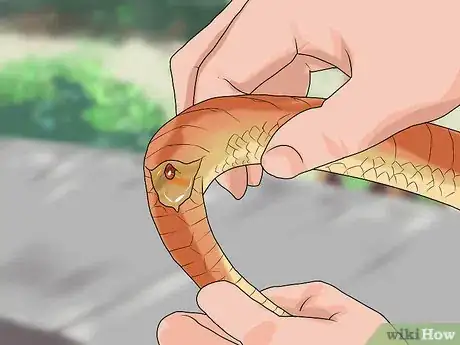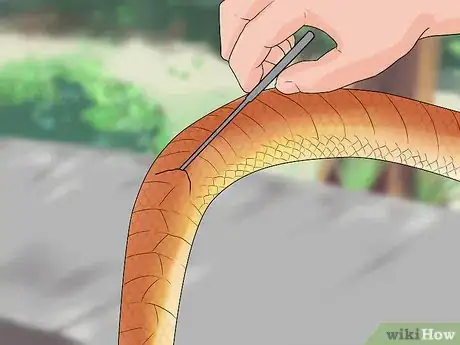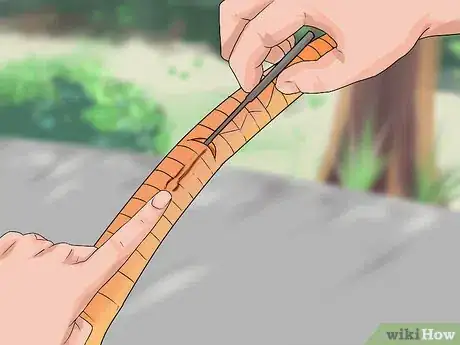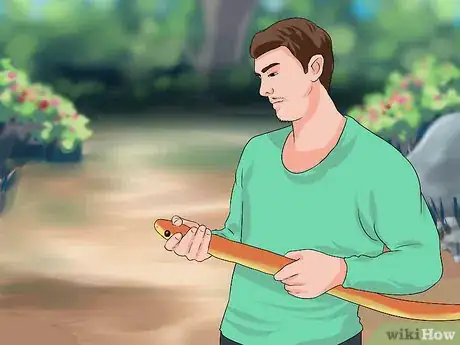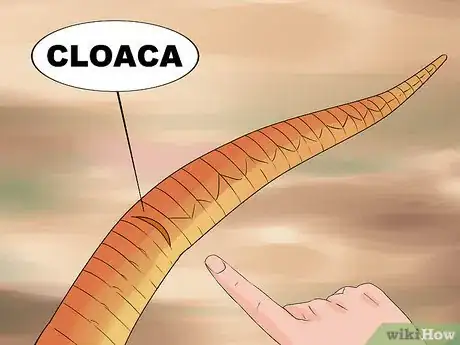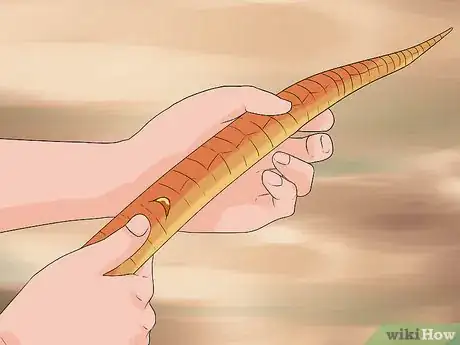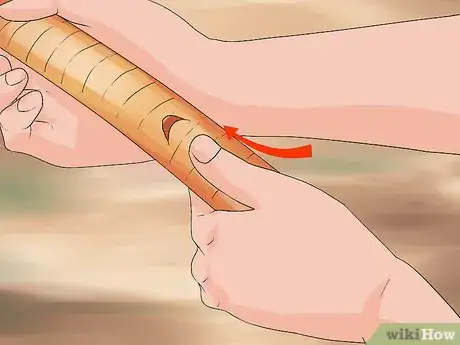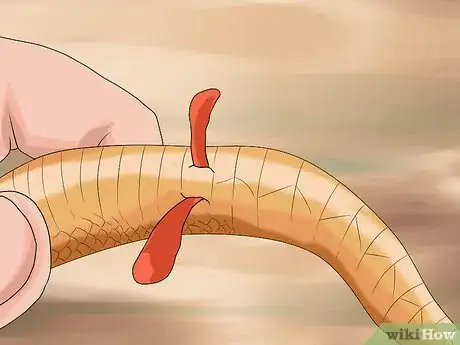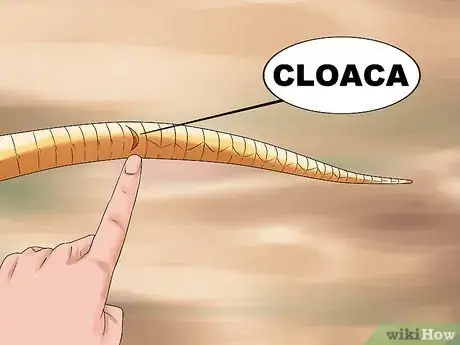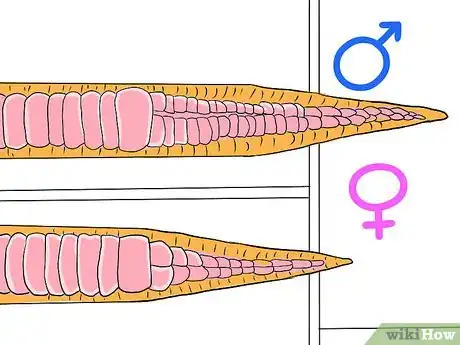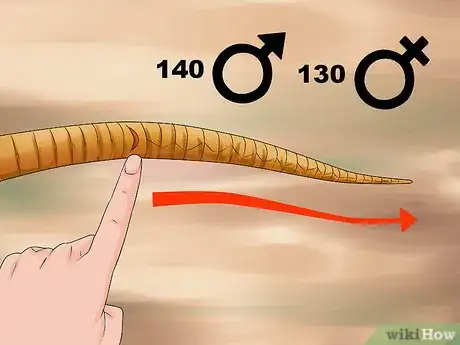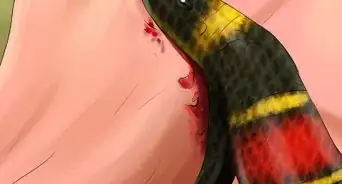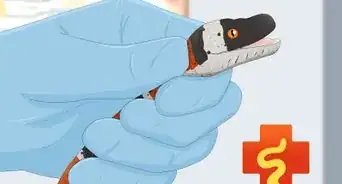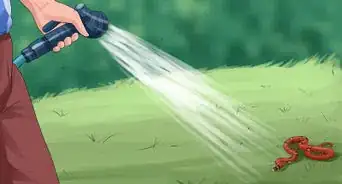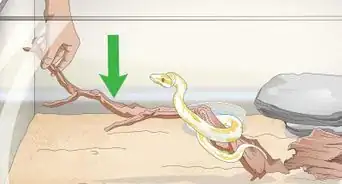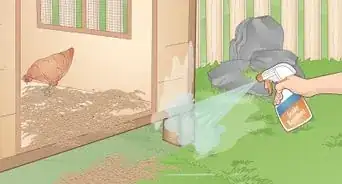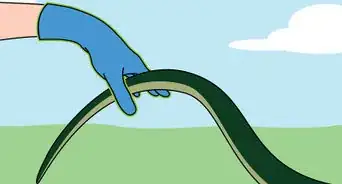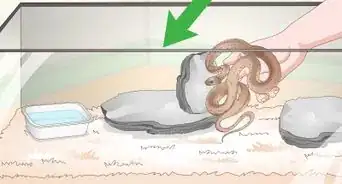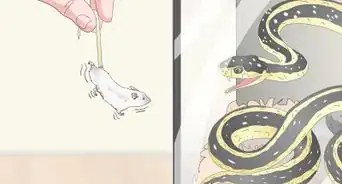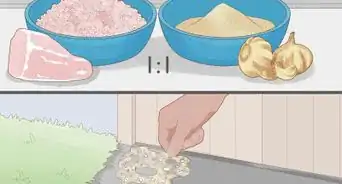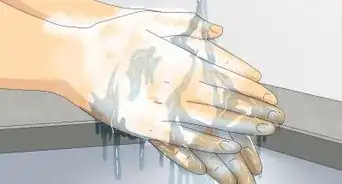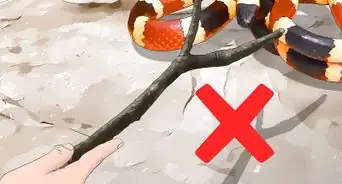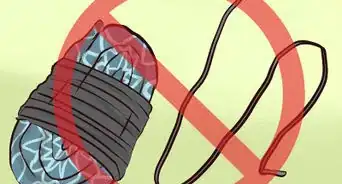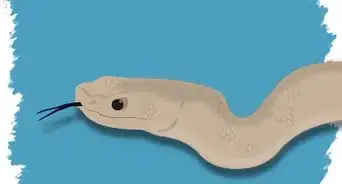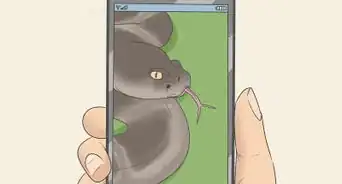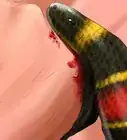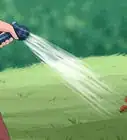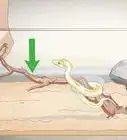This article was co-authored by Pippa Elliott, MRCVS. Dr. Elliott, BVMS, MRCVS is a veterinarian with over 30 years of experience in veterinary surgery and companion animal practice. She graduated from the University of Glasgow in 1987 with a degree in veterinary medicine and surgery. She has worked at the same animal clinic in her hometown for over 20 years.
There are 13 references cited in this article, which can be found at the bottom of the page.
wikiHow marks an article as reader-approved once it receives enough positive feedback. In this case, 89% of readers who voted found the article helpful, earning it our reader-approved status.
This article has been viewed 141,278 times.
At first glance corn snakes are not easy to sex because both males and females are of a similar color and length. They do not have external genitalia, making the difference between the sexes even less obvious. Like most snakes, though, you can sex corn snakes by probing or popping the snake, though popping should only be used on hatchlings.[1] Also, it's important to have someone experienced show you how to perform either technique, as you can harm the snake if you don't know how to do it properly. You can also use visual techniques to some success.
Steps
Probing a Corn Snake
-
1Pick an appropriate probe. Ball-tipped probes are generally safest so they don't hurt the snake, though ones that are dull-tipped are also appropriate. You can find kits online that come in several sizes.[2]
-
2Have someone hold the snake face up. It is difficult to do this procedure by yourself. It's much easier if you have someone available to hold the snake face up. You should be looking at the tail end.[5]
- Make sure the person is supporting most of the snake's body with her hands, especially the middle part of the body.[6] You can also have her control the head by placing gentle pressure on either side of the head at the base. The reason you don't grasp the snake underneath the head is that it can cut off breathing.[7]
-
3Apply lubricant to the probe. It helps make the procedure go more smoothly if you apply some kind of lubrication to the probe. You can dip the probe in petroleum jelly or something like KY Jelly.[8]
-
4Bend the tail backward. Gently tip the tail away from you. This slight bend will expose the cloacal opening, which is where you will be inserting the probe. Locate the opening.[9]
-
5Insert the probe. Use the tip of the probe to gently find an opening, going towards the tail end. You don't want to push too hard, as you can hurt the snake. Once you find an opening, push the probe in, letting it go as far as it will without too much pressure.[10]
-
6Examine how far the probe went in. Count how many scales the probe went in. If you can't tell, mark where it is at the opening with your finger and pull it out. Hold it up against the snake from the opening towards the tail. Count the number of scales. If it only went in a couple of scales, it's likely a female. If it went in 8 to 16 scales, it's likely a male.[11]
- The reason you probe a snake is to see how far the probe goes. If it goes a longer way in, you have a male snake. If it goes a short way in, you have a female snake. Essentially, when you are inserting it along one of his hemipenes, one of two of his inverted genitalia. A female doesn't have these parts, so you won't be able to go as far.[12]
Popping a Young Corn Snake
-
1Have someone hold the other end of the snake. Some corn snakes will bite when you pop them. Therefore, try to have someone control the head so you don't get bitten. The person should hold the snake near the base of the head, placing light pressure on the sides of the head. Don't apply pressure underneath the head, as that can cut off breathing.[13]
- Remember to only perform this technique on hatchlings.
-
2Find the cloaca again. With the snake's belly up, look at the tail of the snake. Find the opening that is a few inches from the tip of the tail. Have tip going away from you.[14]
-
3Place your thumb under the cloaca. Using your dominant hand, apply gentle pressure just underneath the opening. Hold the tip of the tail with your other hand.[15]
-
4Use your other thumb to apply pressure. Moving from the tip of the tail towards the cloaca, apply gentle pressure along the snake. You are gently squeezing it toward the cloaca, sort of like getting toothpaste out of a tube.[16]
- Applying excessive force could cause tissue damage to the snake. Make sure you don't press too hard.
- Before you try this procedure for yourself it is best to be shown what to do by an expert, such as a specialist reptile vet or a trained herpetologist.
-
5
Using Visual Techniques
-
1Find the cloacal opening. The cloaca opening or vent is near the end of the tail. Find the opening to help identify where to look.[19]
-
2Look at the girth. In a female snake, the body of the snake will immediately taper after the vent, going towards the tip of the tail. In a male snake, generally the tail will stay the same girth for an inch or two before tapering.[20]
- Males will also be longer from the cloaca to the tip, but that is difficult to distinguish if you don't have another snake for a comparison.[21]
-
3Count scales. Another method to visually determine the sex of the snake is to count the scales from the cloaca to the tip of the tale on the underside of the belly. It's easiest to do this process on a shed skin, as you will have a hard time keeping a snake still in the process. In an adult, males usually have more than 140 scales, while females usually have less than 130 scales. Between 130 and 140, it is difficult to tell the sex.
- If you can't see it very well, try taking a picture and zooming in.
Expert Q&A
Did you know you can get expert answers for this article?
Unlock expert answers by supporting wikiHow
-
QuestionHow do you tell the difference between a male and female snake?
 Pippa Elliott, MRCVSDr. Elliott, BVMS, MRCVS is a veterinarian with over 30 years of experience in veterinary surgery and companion animal practice. She graduated from the University of Glasgow in 1987 with a degree in veterinary medicine and surgery. She has worked at the same animal clinic in her hometown for over 20 years.
Pippa Elliott, MRCVSDr. Elliott, BVMS, MRCVS is a veterinarian with over 30 years of experience in veterinary surgery and companion animal practice. She graduated from the University of Glasgow in 1987 with a degree in veterinary medicine and surgery. She has worked at the same animal clinic in her hometown for over 20 years.
Veterinarian The tail shape can help give you a clue. With a female corn snake, the tail starts to narrow immediately after the cloacal opening. Whereas in the male, immediately after the cloacal opening, the tail stays just as wide (this is where the hemipenis is located) and only the distal two-thirds is tapered.
The tail shape can help give you a clue. With a female corn snake, the tail starts to narrow immediately after the cloacal opening. Whereas in the male, immediately after the cloacal opening, the tail stays just as wide (this is where the hemipenis is located) and only the distal two-thirds is tapered. -
QuestionHow can you tell if a corn snake is a male or female?
 Pippa Elliott, MRCVSDr. Elliott, BVMS, MRCVS is a veterinarian with over 30 years of experience in veterinary surgery and companion animal practice. She graduated from the University of Glasgow in 1987 with a degree in veterinary medicine and surgery. She has worked at the same animal clinic in her hometown for over 20 years.
Pippa Elliott, MRCVSDr. Elliott, BVMS, MRCVS is a veterinarian with over 30 years of experience in veterinary surgery and companion animal practice. She graduated from the University of Glasgow in 1987 with a degree in veterinary medicine and surgery. She has worked at the same animal clinic in her hometown for over 20 years.
Veterinarian
-
QuestionHow do you tell the age of a corn snake?
 Pippa Elliott, MRCVSDr. Elliott, BVMS, MRCVS is a veterinarian with over 30 years of experience in veterinary surgery and companion animal practice. She graduated from the University of Glasgow in 1987 with a degree in veterinary medicine and surgery. She has worked at the same animal clinic in her hometown for over 20 years.
Pippa Elliott, MRCVSDr. Elliott, BVMS, MRCVS is a veterinarian with over 30 years of experience in veterinary surgery and companion animal practice. She graduated from the University of Glasgow in 1987 with a degree in veterinary medicine and surgery. She has worked at the same animal clinic in her hometown for over 20 years.
Veterinarian
Warnings
- Male hemipenes are delicate and are easily damaged by rough handling. If you are rough, you could cause infertility in your snake.⧼thumbs_response⧽
- None of these methods are foolproof, especially if you aren't an expert. It may behoove you to try more than one of them to be sure of the result.⧼thumbs_response⧽
References
- ↑ http://www.vmsherp.com/CarePages/CareCorns.htm
- ↑ https://www.youtube.com/watch?v=_HG1q42Ll7c
- ↑ http://vpi.com/publications/determining_the_sex_of_snakes
- ↑ http://www.cornsnake.co.uk/sexing-corn-snakes.php
- ↑ http://www.cornutopia.com/Corn%20Utopia%20on%20the%20Web/Sexing%20Snakes%20With%20Probes.htm
- ↑ http://www.reptileknowledge.com/news/how-to-handle-a-pet-snake-handling-tips-for-beginners/
- ↑ https://www.youtube.com/watch?v=6hdXsXu6pKQ
- ↑ https://www.youtube.com/watch?v=_HG1q42Ll7c
- ↑ http://www.cornutopia.com/Corn%20Utopia%20on%20the%20Web/Sexing%20Snakes%20With%20Probes.htm
- ↑ http://www.cornutopia.com/Corn%20Utopia%20on%20the%20Web/Sexing%20Snakes%20With%20Probes.htm
- ↑ http://vpi.com/publications/determining_the_sex_of_snakes
- ↑ http://vpi.com/publications/determining_the_sex_of_snakes
- ↑ https://www.youtube.com/watch?v=6hdXsXu6pKQ
- ↑ https://www.youtube.com/watch?v=qUwCI_xjaIk
- ↑ https://www.youtube.com/watch?v=qUwCI_xjaIk
- ↑ https://www.youtube.com/watch?v=qUwCI_xjaIk
- ↑ http://www.gartersnake.co.uk/maintenance.htm#Sexing%20snakes
- ↑ https://www.youtube.com/watch?v=qUwCI_xjaIk
- ↑ http://www.reptilesmagazine.com/Breeding-Snakes/Visually-Sex-Snakes/
- ↑ http://www.reptilesmagazine.com/Breeding-Snakes/Visually-Sex-Snakes/
- ↑ http://www.reptilesmagazine.com/Breeding-Snakes/Visually-Sex-Snakes/
About This Article
To sex a corn snake, start by finding its cloacal opening near the end of its tail, and looking at the girth of its body. If it appears to taper immediately past the opening, it’s probably a female. However, if it appears to be the same size for a few inches before tapering toward the tail, it’s likely a male. Alternatively, count the scales on the underside of your snake’s body from its cloacal opening to the tip of its tail. If you count more than 140 scales, your snake is likely male, but if your tally is less than 130, it's probably female. For more information from our Veterinary co-author, including how to probe your snake to determine its sex, scroll down!
